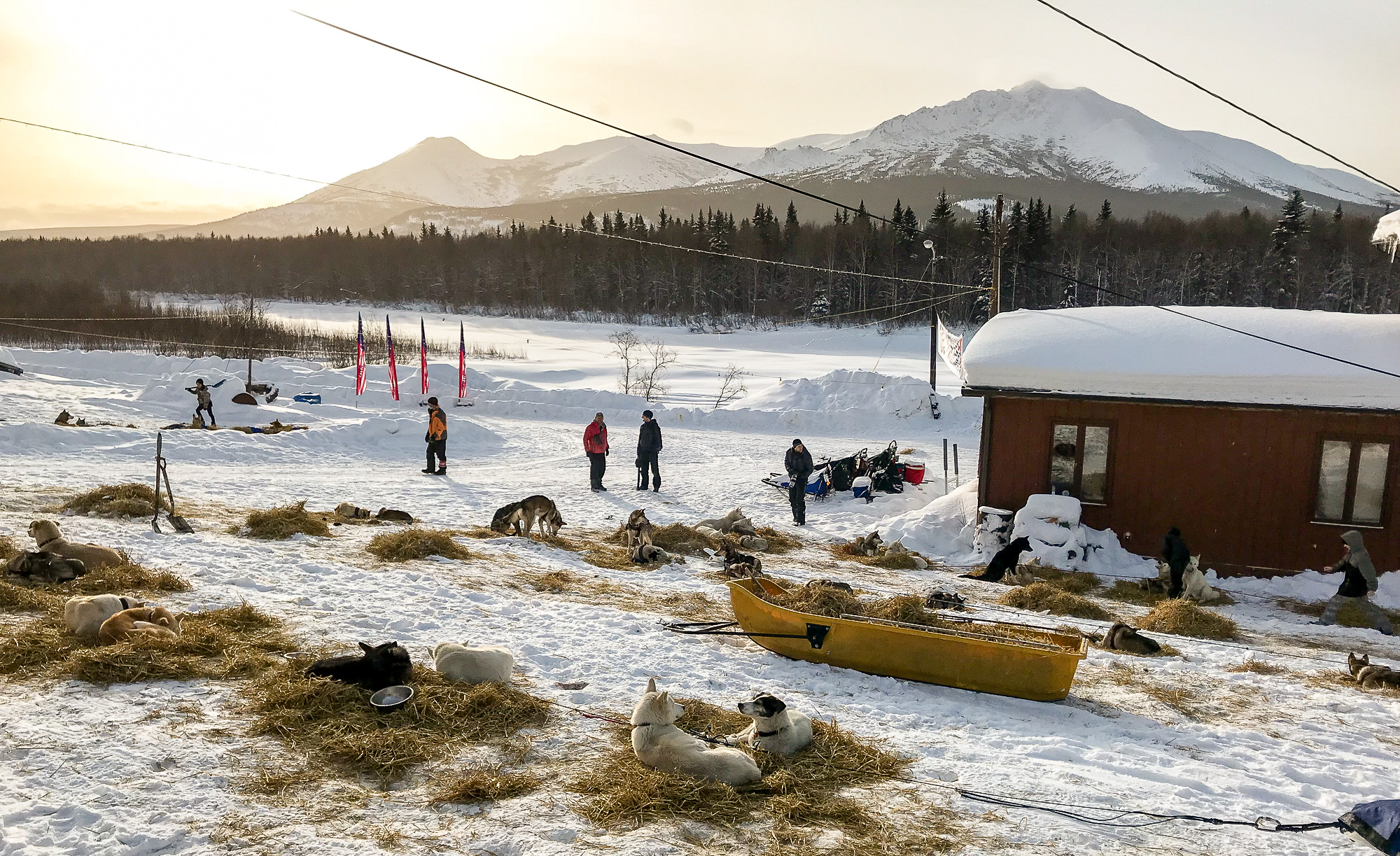As another Iditarod sled dog race is underway — the 46th one, to be exact — some of the historical communities have been abandoned while some remain intact. KNOM’s Davis Hovey reports from one checkpoint that has endured through all these years.
Takotna first became a checkpoint along the Iditarod trail in 1981, and for almost the last twenty straight years, the race has stopped through the community. Nell Huffman has been running the show for Iditarod in Takotna ever since Jan Newton, the famous pie maker, passed away.
“She was very good at teaching all of us and all of our children how to bake pies. We have an oven problem this year here, so pies are being baked in numerous houses around town.”

Even though the pies have continued, according to 65-year-old Huffman, some things have changed over the years: the race has gotten faster, and she’s noticed more tourists coming into town. But for the most part, the sleepy little town of 50 people (some locals say the population is up to 65 now) has remained consistent.
“We really have tried to keep it basically the same, basically simple here. We are really geared towards the mushers, and everything is musher-first. And we feed all the rest, and we ask for donations from everyone who is not Iditarod, so that’s how we sustain it and we support it with selling pop.”
Huffman is referring to soda pop, of course, although currently, their one vending machine is not working. Normally, the community sells cans of soda for $2.25 each, which Huffman says brings in tremendous revenue.

And like most checkpoints along the trail, the Iditarod makes a big impact on Takotna, when it comes through and even when it doesn’t.
“Well, we miss it, because it’s our biggest week of the whole year. A lot of planning, at school, the lessons go into learning about the Iditarod, most of our kids can name all the mushers, and they greet the mushers. They still do that (when the race doesn’t come through), but it doesn’t imprint like it does when the race is here.”
(For the 2017 race, which restarted in Fairbanks, the route did not include Takotna.)

Huffman’s daughter, Tabatha Meglitsch, has seen about 20 Iditarods. That exposure is what got her into handling dogs and dog sled mushing.
“My teacher in elementary school – like 1st and 2nd grade – he had the kids start being pooper scoopers and helping with the drop dogs. In 1st and 2nd grade, that’s what I was doing. But I had a dog team and I knew how to be around dogs, so at 14, they put me in charge of parking the dogs.”
Meglitsch says her main job is handling dogs, but her other duties include running the local store, teaching children, and baking pies, which is the task at hand as we are speaking. With limited sources of income for those who choose to settle in Takotna, according to Meglitsch, quite a few families in the community live off of $10,000-$15,000 a year.
She says the short-term job opportunities that sometimes open up are just enough to sustain the community.
“During the summer, pretty much everyone can have a full time job, ’cause the mines all open up and we have to haul fuel. This summer, we’re going to have to rehab the library. So that will probably be 5 or 6 full time jobs for locals, for about three months, and it might be the only work some of them have all year.”
As a teacher, Meglitsch says she has one of the few stable, full time jobs in the community. She notes that it’s relatively cheap to live in Takotna thanks to subsidies from the State. And as long as the community is sustained, Meglitsch hopes the Iditarod race will continue to endure as well, so that her kids and their friends can enjoy the race like she does.
“A lot of these kids, their families cannot afford to have them go into town (Anchorage) at all. So this is one of the only opportunities they get to see a bunch of strangers, and see different ethnicities, beliefs, and accents. It’s good exposure for them.”
All of the 64 mushers competing in this year’s race, along with the fanfare it brings, have already come and gone through Takotna, leaving the usual population of 50 plus people to their normal, quiet lives.
Image at top: Sun shines on dog teams resting in Takotna on Thursday. Photo: Davis Hovey, KNOM.





